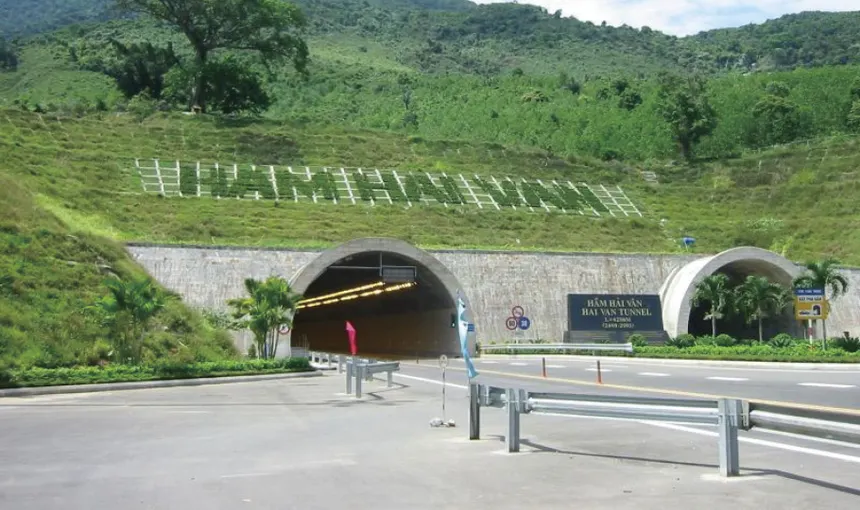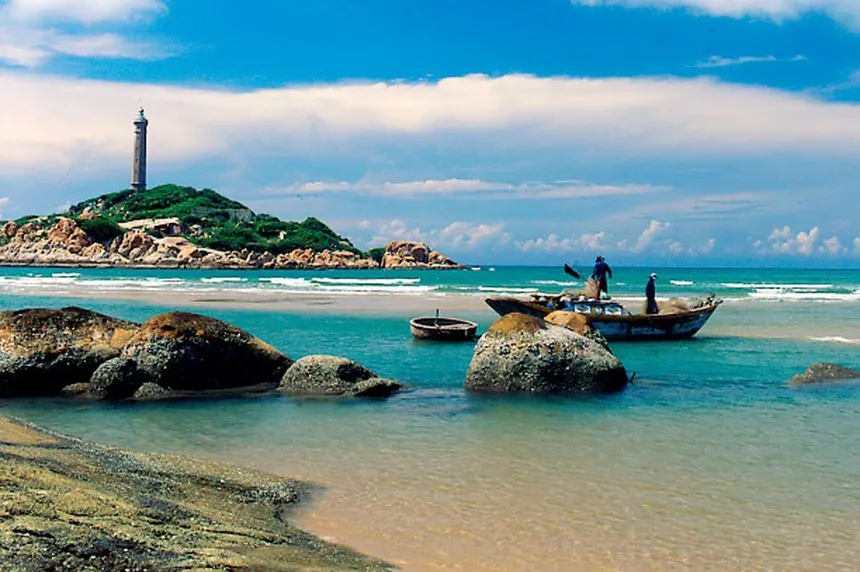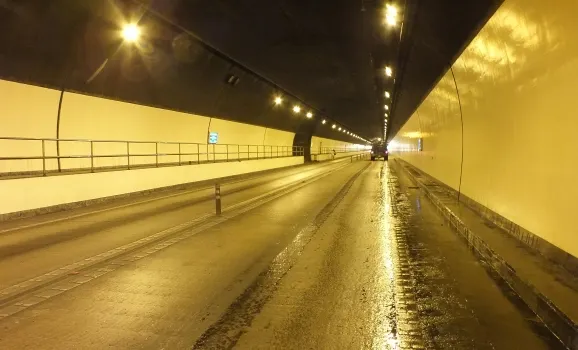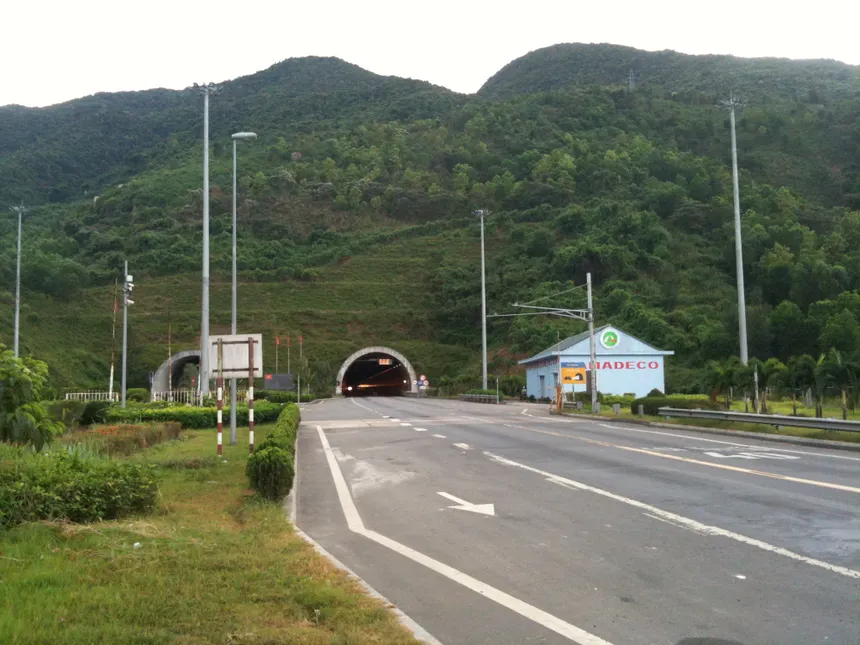Hai Van Tunnel: Vietnam’s Monumental Road Tunnel Connecting Da Nang and Hue
Overview of Hai Van Tunnel: Vietnam’s Longest Road Tunnel
The Hai Van Tunnel is a feat of modern engineering that has transformed transportation in Central Vietnam. Spanning 6.28 kilometers (3.9 miles) through the formidable Hai Van mountain range, this tunnel holds the prestigious title of Vietnam’s longest road tunnel and was once the longest in Southeast Asia. Strategically located between Da Nang and Hue, the tunnel serves as a vital artery for both logistics and travel along Vietnam’s backbone: Highway 1A and the North-South transportation corridor. Constructed to ease the steep, hazardous passage of the mountain’s open air pass, the tunnel offers a safer, quicker, and more reliable route, especially during Central Vietnam’s rainy season. The Hai Van Tunnel is a symbol of the country’s push toward modern infrastructure and plays a central role in both daily commutes and large-scale logistics, making it an essential landmark for anyone traversing the Vietnamese road network. For more details, check its map location: Hai Van Tunnel on Google Maps.

How Hai Van Tunnel Connects Da Nang and Hue within Vietnam’s Road Network
The Hai Van Tunnel is not just a shortcut—it is a transformative link in Vietnam’s transportation system. By burrowing directly through Hai Van Mountain, the tunnel bypasses the elevation and curves of the old Hai Van Pass, connecting Da Nang and Hue more efficiently. This underground route is a critical segment of Highway 1A, which runs the length of Vietnam, linking north to south and serving as the backbone for the country’s trade and travel. The tunnel supports the North-South transportation corridor, an economic lifeline that facilitates the movement of goods, tourists, and locals between major cities.
Logistically, the tunnel has redefined the Da Nang-Hue route. Travel time is cut dramatically, freight cars benefit from reduced wear and accident risk, and emergency response is vastly improved. Hai Van Tunnel supports the smooth operation of the Vietnamese transportation system, exemplifying “infrastructure development” and symbolizing a modern Vietnam. Tourists and commercial vehicles alike now prefer the tunnel, especially during inclement weather, as it bypasses the treacherous mountain highway exposed to landslides and storms. Ovuigo.com recommends the tunnel route for efficiency, safety, and reliability—contact us on WhatsApp at +84868319161 for route support or travel guidance.

Construction and Engineering Features of Hai Van Tunnel
The Hai Van Tunnel set a new standard for mountain tunnels in Asia with its construction, which began in 2000 and concluded in 2005. The tunnel stretches 6.28 km in length and 11.9 meters in width, allowing for dual vehicular lanes. Built from reinforced concrete, the structure is designed to withstand seismic activity and the particular demands of constant heavy vehicle flow.
Key engineering attributes include minimal tunnel curvature, extensive ventilation systems, advanced lighting, and multiple emergency exits positioned for swift evacuation if needed. A precise toll management and traffic control setup ensures continuous flow and operational safety. The tunnel also features modern firefighting technology and robust drainage to prevent flooding, rare among mountain tunnels of its kind. With all operations managed by the Vietnam Expressway Corporation, strict maintenance protocols keep the tunnel in peak condition and guarantee safety for all users. These features position the Hai Van Tunnel as an exemplar of Vietnamese infrastructure and a global standard for tunnel engineering.

Safety Measures and Travel Experience in Hai Van Tunnel
Safety defines the Hai Van Tunnel experience. Compared to the open air pass, the tunnel’s environment offers protection from weather hazards and geological risks. Inside are state-of-the-art lighting and a controlled environment designed to keep visibility and air quality optimal at all times. The ventilation system circulates fresh air while high-tech cameras and sensors monitor traffic and warn of any issues. Toll gates organize entry and exit, reducing traffic jams and ensuring vehicle monitoring.
Travelers now benefit from a predictable, comfortable journey regardless of external conditions. Standard vehicles, buses, and freight trucks all pass safely, supported by emergency exits at regular intervals and clear signage throughout. Each trip through the tunnel is subject to a toll (ranging from 35,000 VND for cars to over 160,000 VND for larger vehicles), which covers maintenance and staffing costs vital for keeping this major infrastructure in world-class condition. For those who recall the risky, slow climb of the mountain path, the tunnel is a welcome, modern improvement. To plan your travel with confidence, contact ovuigo.com or chat on WhatsApp at +84868319161.

Comparing Hai Van Tunnel and Hai Van Pass: Travel Time, Safety, and Scenic Value
The main advantage of the Hai Van Tunnel is its reliability: travel times are slashed from over an hour on the winding pass to just 10-15 minutes through the tunnel. Safety is paramount; the tunnel shields from heavy rain, fog, and rockfalls that frequently close the pass. For logistics and daily commuters, the tunnel’s predictable speed and schedule translate to real cost-savings and peace of mind. From a tourist perspective, however, the Hai Van Pass offers an open air experience with stunning views of the sea, mountains, and Vietnam’s coastline—an experience lost when traveling underground.
Choosing between the two depends on priorities. Travelers aiming for efficiency, safety, or traveling during poor weather widely use the tunnel. Those desiring dramatic landscapes or adventure often opt for the mountain path, accepting its slower pace. Ovuigo.com can guide visitors on when to choose each route—contact us on WhatsApp at +84868319161 for tailored advice.
Unique Attributes and Historical Background of Hai Van Tunnel
The Hai Van Tunnel stands out for its status as Southeast Asia’s longest road tunnel at the time of completion—a record that brought prestige to Vietnamese engineering. It was constructed with a rare private-public partnership model that pooled government backing and private investment, setting the tone for future Vietnamese infrastructure projects. The tunnel’s development occurred within a broader drive to modernize national highways after the economic reforms of the 1990s (Đổi Mới).
Historically, the need for the tunnel arose from the limitations of the Hai Van Pass, which was the sole route for centuries but was infamous for accidents, landslides, and delays. By 2005, the completion of the tunnel transformed the North-South road network and became a sign of Vietnam’s forward momentum. Unique features—including its dual carriageway, seismic resistance, sophisticated emergency exits, and integration with the highway toll system—continue to set it apart. As a lasting symbol of Central Vietnam’s development, the Hai Van Tunnel is more than just a road—it is part of the region’s identity and daily life.
Ready to experience Vietnam’s world-class infrastructure or need help planning travels between Da Nang and Hue? Reach out to ovuigo.com directly or via WhatsApp at +84868319161. For unique, comfortable stays near Da Nang and Hoi An, book The Manor Hoi An at airbnb.com.au/h/themanorhoian5beds, Hola 1 at airbnb.com.au/h/hola1a, or Hola 2 at airbnb.com.au/h/hola22.




